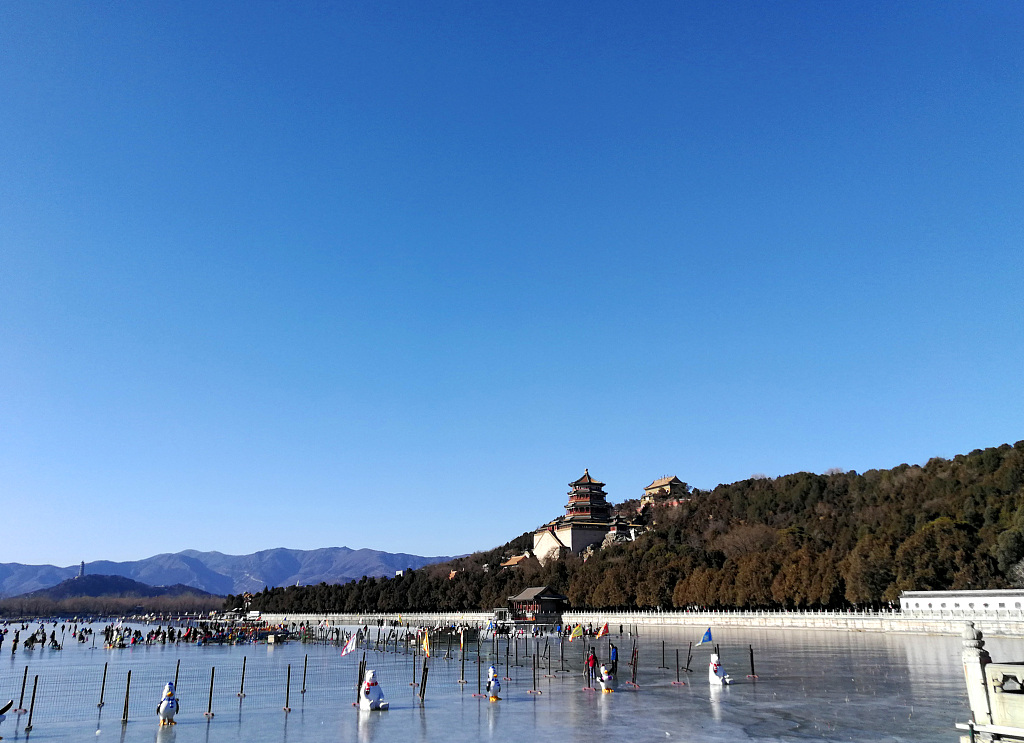
Visitors skate at the Summer Palace in Beijing on January 13, 2019. (Photo: VCG)
Beijing's PM2.5 concentration averaged 51 micrograms per cubic meter in 2018, down by 12.1 percent since the previous year, and down by 37 percent when compared with 2015. The reduction exceeded the reduction target set by the 13th Five-Year Plan (2016-2020), said Liu Bingjiang, head of the air quality division of the Ministry of Ecology and Environment at a news conference Monday.
Liu said, according to the binding targets set by the five-year plan for air quality, Beijing's PM2.5 levels will have decreased by 30 percent, from 81 to 56 micrograms per cubic meter, by 2020.
In recent years, Beijing has beefed up its fight against air pollution, with coordinated efforts undertaken by neighboring provinces and cities, Liu said. Due to a joint action plan issued by the Ministry of Ecology and Environment and the local governments of Beijing, Tianjin, Hebei, Shanxi, Shandong and Henan; and continued efforts to prevent and address air pollution, Beijing has seen a drastic decline in emissions of pollutants and concentration of particulate matters.
Liu pointed out that Beijing's air quality is very vulnerable to wind and humidity among other air conditions. The impact is compounded by the greater Beijing-Tianjin-Hebei region's extensive economic growth models, high coal consumption and vehicle emissions, resulting in an immense intensity of pollutant emissions - more than four times the average level across the country.
"The battle against air pollution is a long-term and arduous task, so it will require continuous efforts," added Liu.
In the long run, Beijing's improvement in air quality will reduce as the process of relocating non-capital functions away from the city continues; but in the short run, it will be an impressive achievement if the city manages to keep PM2.5 levels at 51 micrograms per cubic meter in 2019, Liu said.


